If you’ve ever played “Cards Against Humanity,” then you know the drill: the key to victory is personalizing your jokes to get your friends crying from laughter. But what if we flipped the script on our typical Friday night activity and made it about sharing our feelings and addressing mental health instead?
That’s Stuart Fitzwilliam’s idea, and it could change the way we think about dealing with anxiety. Cards for Calm is a game designed to help people address negative behavior patterns both on their own and in the company of friends and family. GOOD had the chance to talk to Fitzwilliam about his new product, which is currently available for pre-order on Kickstarter.
What gave you the idea to create this card game and start a crowdfunding campaign to support it?
The whole thing sprang out of my own experience. Almost exactly two years ago this month, I began treatment for depression. I [have been] in remission for over a year and a half now and all of the techniques that essentially went into the cards are various things I learned in therapy and things I’ve used since recovery to help me stay on track. One of the issues is always that little active negativity and habits can sometimes spiral… leading to relapse. So these are all things I use just to manage my own symptoms.
[quote position="left" is_quote="true"]I wanted to come up with a way that would help people think about these things and help them deal with their own personal issues and anxieties[/quote]
One of the real things I’ve found, especially before I found treatment, was that people don’t tend to talk about things like depression. Especially if you look specifically at the male demographic, we’re traditionally encouraged to not talk about our feelings. So I wanted to come up with a way that would help people think about these things and help them deal with their own personal issues and anxieties. But also try and find a way to let them either deal with it themselves or sit down with friends and create an environment where people would feel safe sharing little things that they wanted to work on about themselves. And that’s really where the idea of the card game sprang from.
How does it work and how do you use them?
There’s two variances of it for the one deck. So there’s a single player version and you can use that on a daily basis. The best way I’ve found to start is to shuffle the deck at night right before you go to sleep, and put the deck on top of the screen of your phone. Because we all wake up in the morning and the first thing we do is reach for our phones. I’m as guilty of that as anyone. It’s not the healthiest habit, so that way, putting it on the screen gives you the option of ‘oh, maybe I’ll take a card or maybe I’ll take a minute to myself to think about what I want to do today.’
The idea is that in the single player version, you can play however many times you want to in a day. It’s almost like a solitaire type of game I suppose where you keep track of the score—just of the number of cards you play—per day… It is a really good way of tracking how many times a day you’re creating these moments for yourself.
So, just to break it down, when you actually play a card, the deck is split into two. So there are behavior cards and action cards… Each behavior card has a corresponding action card, and the action card helps you think through your situation a little more and helps you think of creative ways to try and resolve it. And those ways can be either real-world actions you can take to try and resolve that or creative visualizations that help you reframe the situation.
What’s the benefit to making it a game and not another self-help book?
[Self-help books] work really well, but they tend to be things that I read once and I think, ‘That’s really good,’ and then put it back on the shelf or back beside the bed. And then I never quite remember to pick it back up, because if something’s 200 pages, it’s not always easy to jump in and grab the one thing that you want… But a deck of cards is the kind of thing you can carry with you easily. It’s a much more accessible format and the kind of thing where people can… flip over a card and read that while waiting for a coffee at Starbucks.
According to Newsweek, 1 in 5 Americans suffer from mental health problems in some capacity each year. Why do you think people still have hang-ups talking about mental health when it’s something many of us experience?
I mean, certainly the stigma around mental health is decreasing and people are getting generally a broader understanding that caring for your mental health is not dissimilar to caring for your physical health. But there is still so much overt and covert social pressure on men in particular that thinking about feelings isn’t something you do. There’s the phrase you hear a lot that you should just ‘man up,’ and it’s implicit that trying to deal with these things is in some way the antithesis of what you should be doing as a man. And those stigmas are beginning to slide, but they’re kind of endemic in our culture and I don’t see them going away for a few generations yet.
[quote position="right" is_quote="true"]there is still so much overt and covert social pressure on men in particular that thinking about feelings isn’t something you do[/quote]
In an attempt to change that negative aspect of our culture, would you encourage people to play the deck with other people?
There is a multi-player version, which is kind of like “Cards Against Anxiety”… In that scenario, each person takes turns controlling the deck… They read the behavior card along with the corresponding action card and, along with the other players, explain as much as they’re comfortable the problem they have. Each of the other players takes a turn trying to think of some kind of creative way they can deal with this… When each player’s made a suggestion, whoever’s controlling the deck awards the card to the player they feel made the suggestion that was most helpful to them… With the multi-player version, the way you win is by offering as much help to your friends as you can.
I think a game scenario is really something where people will sit down and talk about these things. It can be relatively minor or it can be something more deep and personal... but it’s a great way for people to begin to explore talking about their feelings.
At the very least, it’s nice to think of doing something with your friends and family that doesn’t revolve around screens. Do you have any other suggestions for people who are trying to disconnect more often to give themselves a mental break?
Sometimes it’s as simple as putting the phone in the other room, or if I’m at home, just pulling the power cord out for the Wi-Fi. I like that you have to physically make an effort to reconnect everything… I use Trello quite extensively just to manage everything going on in my life, and I found it really helpful when I made a self-care Trello board, which was just a list of six or eight tasks to do daily. And the goal was never to do each of them daily. If I could move over at least half of these cards each day from “to do” to “done” then I know I’ve made a reasonable amount of time for myself. And they’re things like doing yoga, going for a run, reading, sitting outside—things that are obvious that sometimes we miss. Just that simple little list… I found really beneficial.










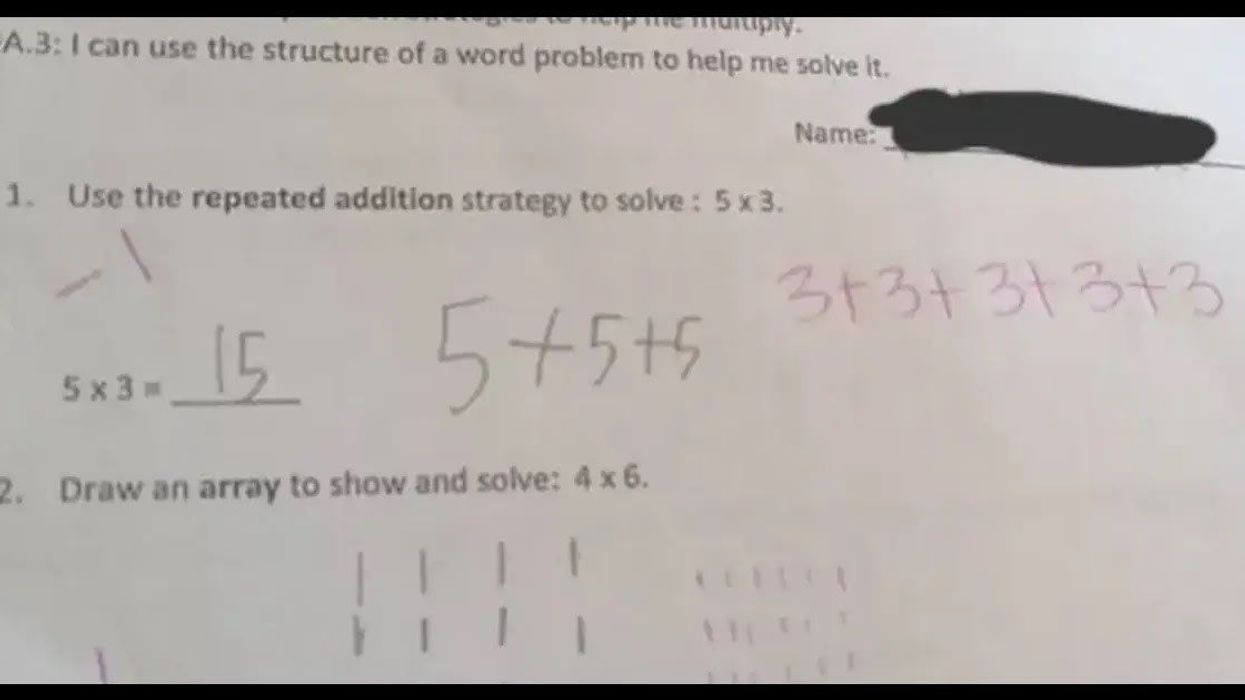
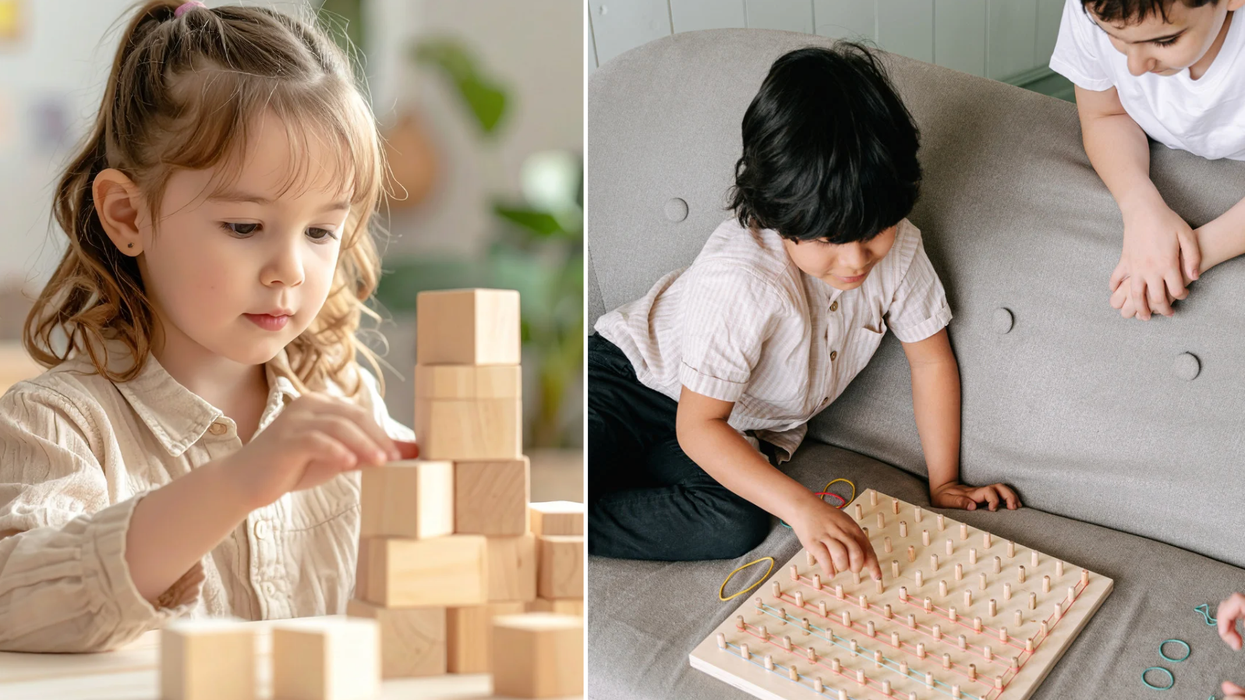


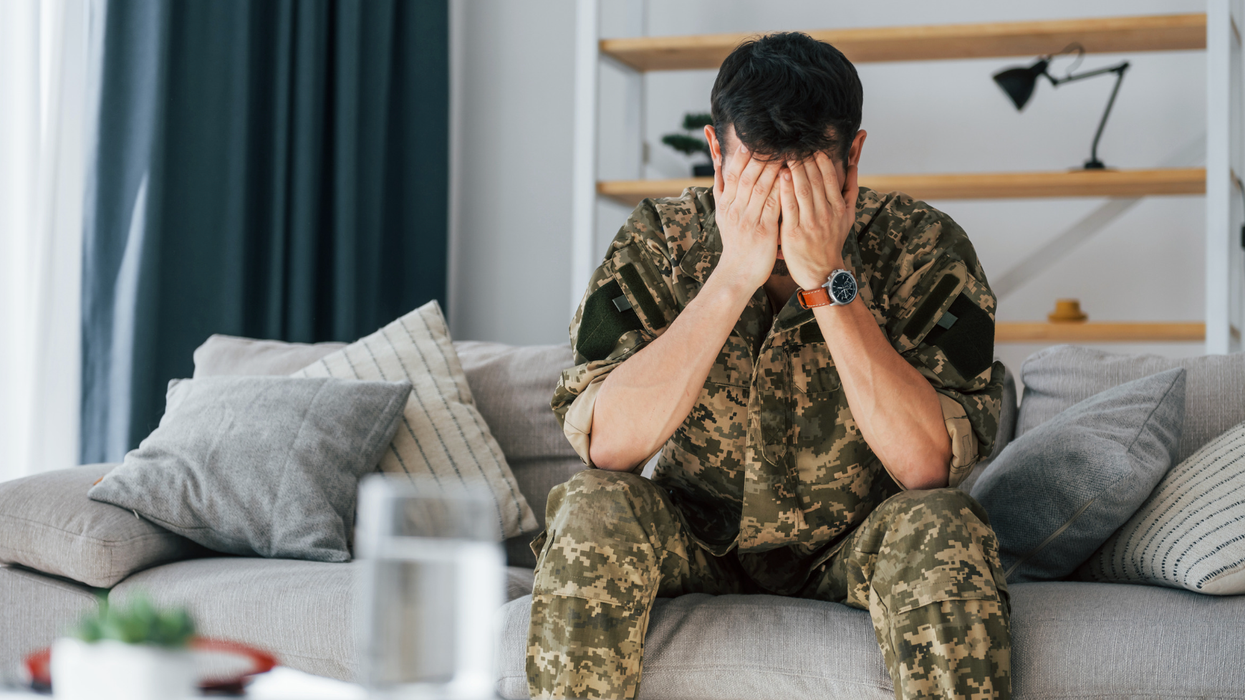

 Ladder leads out of darkness.Photo credit
Ladder leads out of darkness.Photo credit  Woman's reflection in shadow.Photo credit
Woman's reflection in shadow.Photo credit  Young woman frazzled.Photo credit
Young woman frazzled.Photo credit 




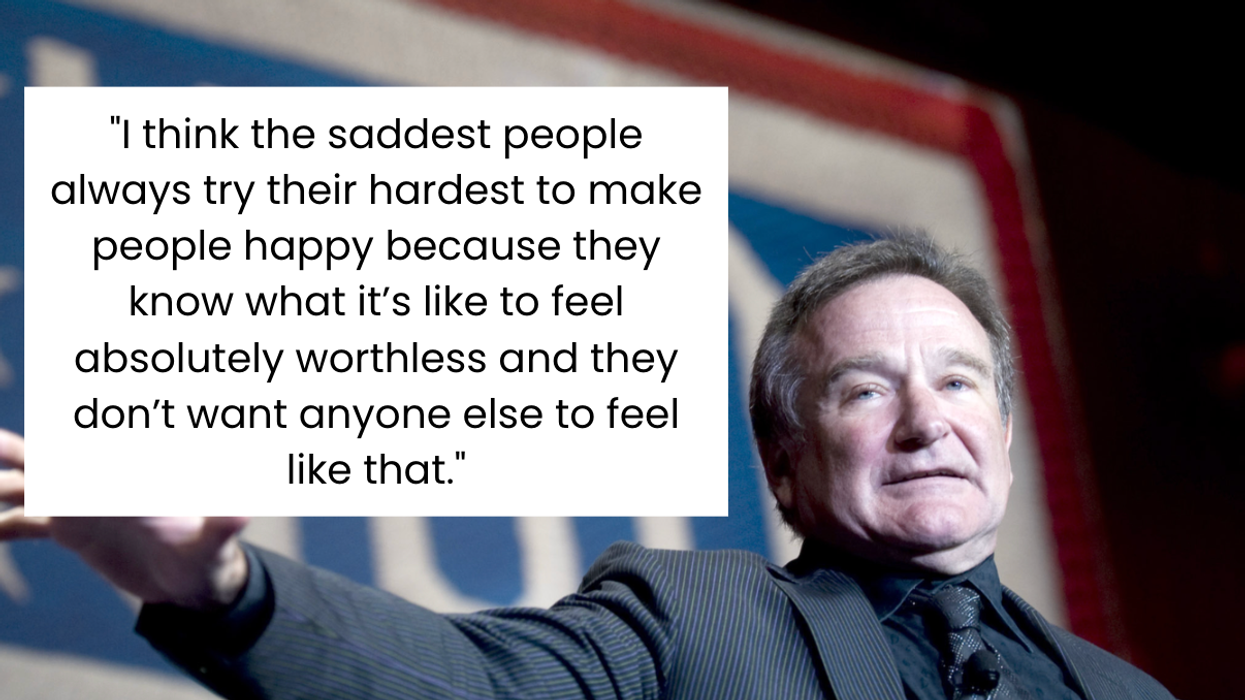
 Robin Williams performs for military men and women as part of a United Service Organization (USO) show on board Camp Phoenix in December 2007
Robin Williams performs for military men and women as part of a United Service Organization (USO) show on board Camp Phoenix in December 2007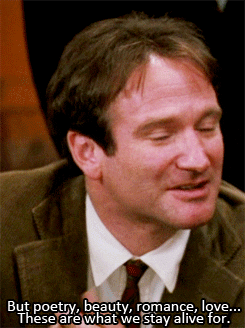 Gif of Robin Williams via
Gif of Robin Williams via
Will your current friends still be with you after seven years?
Professor shares how many years a friendship must last before it'll become lifelong
Think of your best friend. How long have you known them? Growing up, children make friends and say they’ll be best friends forever. That’s where “BFF” came from, for crying out loud. But is the concept of the lifelong friend real? If so, how many years of friendship will have to bloom before a friendship goes the distance? Well, a Dutch study may have the answer to that last question.
Sociologist Gerald Mollenhorst and his team in the Netherlands did extensive research on friendships and made some interesting findings in his surveys and studies. Mollenhorst found that over half of your friendships will “shed” within seven years. However, the relationships that go past the seven-year mark tend to last. This led to the prevailing theory that most friendships lasting more than seven years would endure throughout a person’s lifetime.
In Mollenhorst’s findings, lifelong friendships seem to come down to one thing: reciprocal effort. The primary reason so many friendships form and fade within seven-year cycles has much to do with a person’s ages and life stages. A lot of people lose touch with elementary and high school friends because so many leave home to attend college. Work friends change when someone gets promoted or finds a better job in a different state. Some friends get married and have children, reducing one-on-one time together, and thus a friendship fades. It’s easy to lose friends, but naturally harder to keep them when you’re no longer in proximity.
Some people on Reddit even wonder if lifelong friendships are actually real or just a romanticized thought nowadays. However, older commenters showed that lifelong friendship is still possible:
“I met my friend on the first day of kindergarten. Maybe not the very first day, but within the first week. We were texting each other stupid memes just yesterday. This year we’ll both celebrate our 58th birthdays.”
“My oldest friend and I met when she was just 5 and I was 9. Next-door neighbors. We're now both over 60 and still talk weekly and visit at least twice a year.”
“I’m 55. I’ve just spent a weekend with friends I met 24 and 32 years ago respectively. I’m also still in touch with my penpal in the States. I was 15 when we started writing to each other.”
“My friends (3 of them) go back to my college days in my 20’s that I still talk to a minimum of once a week. I'm in my early 60s now.”
“We ebb and flow. Sometimes many years will pass as we go through different things and phases. Nobody gets buttsore if we aren’t in touch all the time. In our 50s we don’t try and argue or be petty like we did before. But I love them. I don’t need a weekly lunch to know that. I could make a call right now if I needed something. Same with them.”
Maintaining a friendship for life is never guaranteed, but there are ways, psychotherapists say, that can make a friendship last. It’s not easy, but for a friendship to last, both participants need to make room for patience and place greater weight on their similarities than on the differences that may develop over time. Along with that, it’s helpful to be tolerant of large distances and gaps of time between visits, too. It’s not easy, and it requires both people involved to be equally invested to keep the friendship alive and from becoming stagnant.
As tough as it sounds, it is still possible. You may be a fortunate person who can name several friends you’ve kept for over seven years or over seventy years. But if you’re not, every new friendship you make has the same chance and potential of being lifelong.